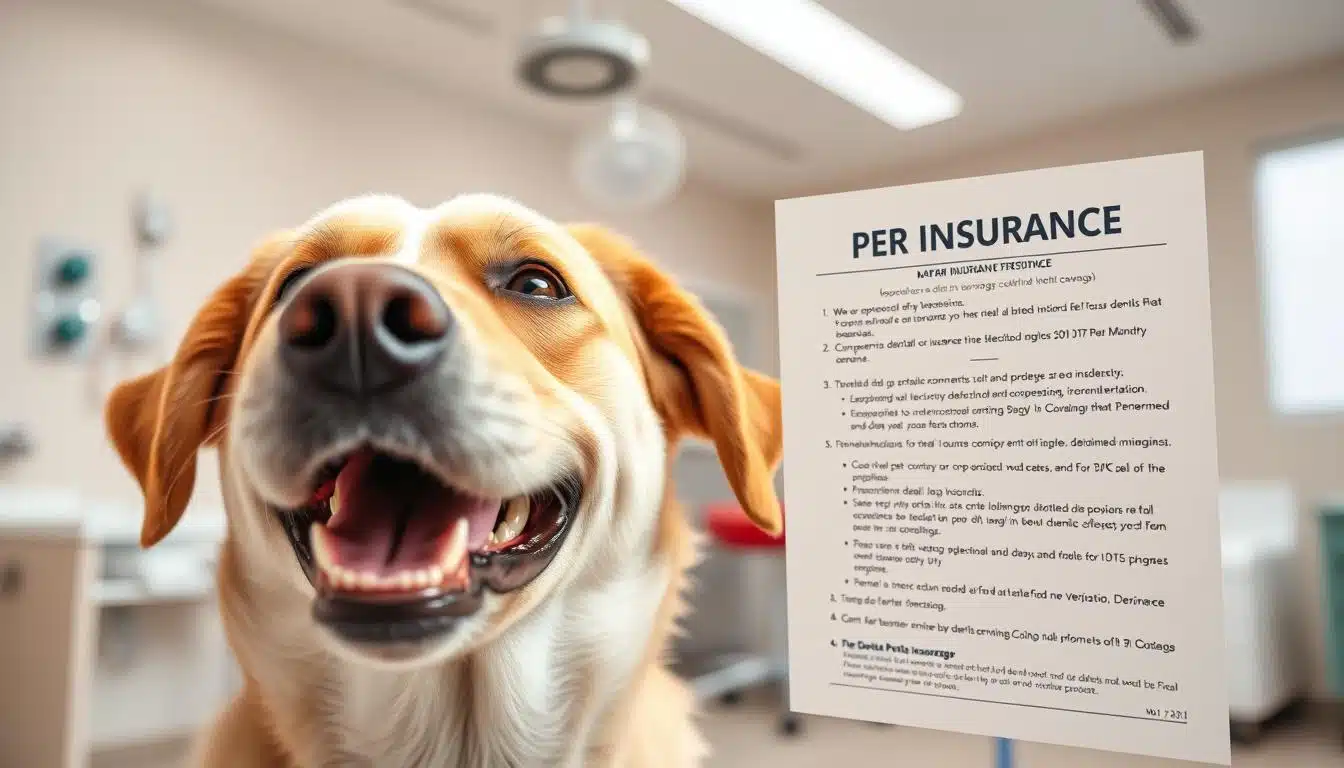Adding a teen driver to your policy can raise costs by 80% on average, Bankrate says in 2025. This is a big worry for families with tight budgets. They wonder: How can we keep our teen safe without spending too much?
Nearly 1 in 4 parents say they’ve waited to teach their teens to drive because of insurance costs. This shows how high the stakes are.
But, there’s good news. Big insurance companies now have smart ways to help. Programs like Progressive Snapshot and State Farm’s Steer Clear can save families up to 32%. They reward safe driving.
Could your teen’s good grades get them discounts? What about finishing a driver’s education course? Does it really cut $2,000 off yearly costs?
As per my opinion best way to reduce car insurance for teen drivers is to bundle policies, leverage telematics programs, maintain good grades, enroll in defensive driving courses, and choose vehicles with high safety ratings and low repair costs.
The 2025 insurance world uses technology and custom savings. Telematics devices watch how you drive. Strategic discounts go for good grades and training. This way, families can find a balance between safety and saving money without giving up anything. Here I have discussed step by step process and pro tips to reduce car insurance especially for teen drivers.
Table of Contents
ToggleKey Notes
- Premiums jump 25-32% for teen drivers without discounts
- Usage-based programs (like telematics) offer personalized savings
- Good student discounts reward GPA above 3.0
- Driver’s ed courses can cut costs by $1,500-$2,000 yearly
- Multi-policy bundles maximize insurer loyalty benefits
How to Get Cheaper Car Insurance for Young Drivers
Smart choices can save families $2,765 a year on teen driver insurance. Bankrate’s 2025 data shows a big difference. Adding teens to family policies costs $3,345 yearly, while standalone coverage is $6,110. This 45% difference makes multi-car discounts a top choice for saving money.
- Bundle teen policies with parent plans
- Activate location-based discounts
- Optimize vehicle usage reporting
Geico’s away-at-school discount shows how insurers reward less driving. Students who live on campus 9 months save 18-22% on premiums. Bankrate’s lead analyst says, “Families often miss out on seasonal savings.” Reporting low-mileage periods can save $671 a year.
| Policy Type | Average Annual Cost | Savings | Best For |
|---|---|---|---|
| Family Policy Add-On | $3,345 | Up to 22% | Multi-car households |
| Standalone Policy | $6,110 | N/A | Independent teen drivers |
| Away-at-School Discount | $3,726 → $2,941 | 21% | College students |
State rules can greatly affect savings. Texas parents save $489 more than California ones with bundled home-auto policies. Always check if you qualify for discounts before renewing.
“Teens on family plans get better rates because of parental claims and insurer trust.”
2025 Insurance Savings Report
Here are some key steps:
- Compare bundled vs separate policy quotes
- Update mileage estimates every semester
- Request telematics device trials
Why Teen Drivers Pay 2-3x Higher Insurance Premiums
Insurers see teen drivers as risky. A New York Times study shows adding a 16-year-old to a policy can raise costs by 50%. This is because teens are involved in more crashes and fatal accidents.
Inexperience Drives Up Risk Calculations
New drivers face higher costs for three main reasons:
- Speed-related crashes: 63% of teen crashes are due to speeding
- Night driving: 40% of teen fatal crashes happen at night
- Passenger distractions: Having friends in the car makes crashes more likely
“Insurers set prices based on how likely they are to lose money. Teen drivers cost 3x more than adults.”
NHTSA 2025 Risk Assessment Report
Teenage Car Insurance Average Cost per Month
Costs vary a lot:
| State | Standalone Policy | Parent Policy Add-On |
|---|---|---|
| Texas | $412 | $287 |
| Ohio | $329 | $201 |
| California | $467 | $315 |
Vehicle Choice Impacts Rates Dramatically
Choosing the right car matters a lot:
- Mustang GT: $228/month extra
- Honda CR-V: $89/month extra
- Toyota Camry: $64/month extra
Location-Based Rate Variations
Urban teens pay more than rural ones. Places like Miami and Chicago have even higher costs. This is because of more accidents, thefts, and traffic.
Texas has rates 18% higher than the national average. But Ohio has lower rates for rural areas.
Good Student Discounts: Requirements & Savings
Insurance companies give good student incentives to teens who do well in school. These discounts lower the cost of car insurance. To get these discounts, families must meet certain requirements and follow specific steps.
GPA Thresholds Across Major Insurers
Each insurance company has its own rules for discounts. Here’s a look at six big ones:
| Insurer | Minimum GPA | Equivalent Grade | Average Discount |
|---|---|---|---|
| Allstate | 2.5+ | B- average | 15-20% |
| State Farm | 3.0+ | B average | 25% |
| Geico | 3.0+ | B average | 12-15% |
| Nationwide | 3.0+ | B average | 10-25% |
| Progressive | 3.0+ | B average | 10% |
| Farmers | 3.0+ | B average | 10-15% |
Most companies ask for proof of good grades. State Farm accepts digital records in 42 states. Allstate might need a notarized copy in some places. Discounts usually last until you graduate.
College Student Discount Extensions
Many discounts for teen driver car insurance keep going even after you go to college. Nationwide keeps the discount for four years if you:
- Stay enrolled full-time
- Keep a 3.0 GPA
- Are under 25
State Farm gives discounts to part-time students who work 30+ hours a week. Geico needs yearly proof but is flexible with deadlines for quarter-based colleges. Always check the renewal rules before each school year.
10 Proven Tips to Reduce Teen Driver Insurance Rates
- Bundle with Family Policies
Add teens to existing family plans instead of standalone policies (saves 31% on average). Combine home/auto insurance for additional discounts (up to 22% at State Farm). - Enroll in Telematics Programs
Use Progressive Snapshot or State Farm Drive Safe & Save to track safe driving habits. Families save up to 32% for avoiding hard braking and late-night driving. - Leverage Good Student Discounts
Maintain a 3.0+ GPA to qualify for 10-25% discounts. Submit transcripts annually (State Farm accepts digital records in most states). - Complete Defensive Driving Courses
AAA’s 8-hour course cuts premiums by 14% at GEICO. Texas mandates state-approved programs (22% savings at Allstate). - Choose Low-Risk Vehicles
Opt for sedans like Honda Civic (1,228/year)oversportscars(FordMustang:1,228/year)oversportscars(FordMustang:3,441/year). Prioritize safety features like automatic emergency braking (14% discount). - Increase Deductibles Strategically
Raise collision deductibles from 500→500→1,000 to save $372/year (Progressive data). Keep emergency funds equal to deductible amounts. - Drop Unnecessary Coverage
Remove rental reimbursement (89/year)andnew−carreplacement(89/year)andnew−carreplacement(121/year) for older vehicles. Switch to liability-only for cars valued under $4,000. - Compare Teen-Focused Insurers
State Farm’s Steer Clear program offers 30% discounts for incident-free driving. GEICO’s mobile app provides AI-powered coaching without devices. - Use Away-at-School Discounts
Students living 100+ miles from home save 18-22% (Geico). Report low mileage during college breaks to maintain savings. - Review Policies Every 6 Months
Adjust coverage as teens gain experience. Ohio families saved 32% by renegotiating after defensive driving courses and vehicle upgrades.
Strategy with Top Insurance Providers
| Strategy | Avg. Savings | Key Requirements | Top Providers | Impact Level |
|---|---|---|---|---|
| Bundle Policies | 25-32% 🟢 | Multi-car + home insurance | State Farm, Allstate | High |
| Telematics Programs | 15-32% 🟢 | 6 months safe driving | Progressive, State Farm | High |
| Good Student Discount | 10-25% 🟡 | GPA 3.0+ | Geico, Nationwide | Medium |
| Defensive Driving Course | 14-22% 🟡 | State-approved certification | AAA, Allstate | Medium |
| Low-Risk Vehicle Choice | 18-64% 🟢 | Sedans with safety features | Honda, Subaru | High |
| Increase Deductibles | 12-17% 🟠 | $1,000+ deductible | Progressive, Liberty Mutual | Low |
| Drop Unused Coverage | 8-30% 🟢 | Older vehicles only | Allstate, Farmers | High |
| Away-at-School Discount | 18-22% 🟡 | 100+ miles from home | Geico, Nationwide | Medium |
| Anti-Theft Devices | 5-15% 🟠 | GPS tracker installation | Travelers, American Family | Low |
| Compare Insurers | 19-30% 🟢 | Annual rate reviews | State Farm, Geico | High |
Telematics Programs That Actually Save Money

Usage-based insurance plans reward safe driving. They track driving in real-time. This is great for families with teens.
These plans use apps or devices to watch how you drive. Things like how fast you go and how well you brake matter a lot. Most insurers offer these plans, but the savings can vary a lot.
Progressive Snapshot: Real-World Results
Progressive’s Snapshot program helps teens save a lot. In fact, 72% of teens save money with it. Here are some recent numbers:
- 89% of teens improve their braking in 90 days
- Families save $214 a year on average
- Keeping a “B+” driving grade lowers rates by 12%
The app gives weekly reports on your driving. Parents like the alerts and tracking of where you go. It helps teens drive safer.
State Farm Drive Safe & Save 2.0
State Farm’s 2025 update brings big changes. Here are three key ones:
- AI predicts collision risks
- Discounts change every 30 days
- Driving at night gets extra points
Teens who use the app drive less at night. They say they drive 31% less. Here’s a comparison of the two programs:
| Feature | Progressive | State Farm |
|---|---|---|
| Discount Type | Upfront + Ongoing | Performance-Based |
| Data Collection | App Only | App + Optional OBD-II |
| Night Driving Impact | -5% to +10% | -15% to +20% |
| Max First-Year Savings | $450 | $600 |
Both programs need you to keep using them to save money. State Farm’s rewards might motivate competitive teens. Progressive’s simple app is better for those who like less fuss.
Parent-Teen Policy Bundling Strategies
Smart bundling can save families a lot of money. It turns insurance into a smaller expense. And it keeps teens safe.
Multi-Car Discount Optimization
Adding a teen to a family policy can save a lot. State Farm customers save $483/year on a 2021 Toyota Camry. Savings depend on a few things:
- Insurer’s per-car discount structure
- Vehicle safety ratings
- Driver assignment flexibility
Geico’s online calculator shows a 19% discount for a third car. This is more than Nationwide’s 12% with SmartMiles, which tracks miles.
Home+Auto Bundle Discounts
Home and auto insurance together can save a lot. American Family gives a 15% discount for both policies with a teen. Here’s how big insurers compare:
| Insurer | Bundle Type | Average Savings | Requirements |
|---|---|---|---|
| State Farm | Home + 3 Cars | $672/year | Claims-free history |
| Allstate | Condo + 2 Cars | $538/year | Paperless billing |
| Liberty Mutual | Renters + 1 Car | $309/year | Autopay enrollment |
Remember, ask for separate quotes for bundled and single policies. Some insurers, like Farmers, might raise home prices but lower car costs a lot.
To get the most savings:
- Compare multi-car and home bundle discounts together
- Ask about loyalty bonuses after 6 months
- Check for discounts when vehicles change
Defensive Driving Courses Worth Taking

Going to certified defensive driving programs is a smart move for cheapest car insurance for teenage drivers. These classes teach how to avoid crashes and manage risks. Insurers give big discounts for this.
AAA Approved Curriculum Options
AAA’s 8-hour online course is a great deal. It costs $75 and teaches teens how to avoid accidents. GEICO policyholders save 14% on their premiums, which is about $230 a year.
Allstate’s teenSmart program is different. It uses games and talks with parents. It teaches teens about:
- Real-world hazard recognition drills
- Speed management strategies
- Insurance discount verification tools
State-Specific Certification Programs
In Texas, all drivers under 18 must take a 6-hour defensive driving course. Allstate gives 22% discounts for those who finish their $129 course. California updated its teen driving courses in 2025. Now, they include training on avoiding collisions.
| Program | Duration | Cost | Max Discount |
|---|---|---|---|
| AAA Online Course | 8 hours | $75 | 14% (GEICO) |
| Texas State Program | 6 hours | $129 | 22% (Allstate) |
| California 2025 Course | 10 hours | $159 | 18% (State Farm) |
Check if your course is approved by your insurer before you sign up. Many offer quick online checks. Just show your completion certificate in their app to get your discount right away.
Vehicle Selection: 2025’s Best Insurance Bargains
Parents often forget how car choice affects insurance for young drivers. A 2025 Honda Civic costs $1,228 annually to insure. This is much less than the $3,441 for a Ford Mustang, a 64% difference.
Insurers look at repair costs, theft rates, and safety tech to set these prices. Studies show midsize cars with safety features are the best value.
Safety Features That Lower Premiums
Modern cars with certain tech get automatic discounts from most insurers:
- Automatic emergency braking (14% average savings)
- Lane-keeping assist systems
- Adaptive headlights
- Blind-spot monitoring
Subaru’s Eyesight tech is a great example. Travelers Insurance gives 17% discounts for cars with this tech. It includes pedestrian detection and adaptive cruise control.
Always check a car’s safety with NHTSA’s free VIN lookup tool before buying.
Top 5 Low-Cost Insured Vehicles
- Toyota Corolla Hybrid ($1,195/year) – Fuel efficient with Toyota Safety Sense 3.0
- Honda Civic LX ($1,228/year) – Top safety pick with 9 airbags
- Hyundai Elantra SEL ($1,310/year) – Free anti-theft software updates
- Subaru Impreza 2.0i ($1,402/year) – Standard AWD and Eyesight system
- Kia Forte LXS ($1,467/year) – 10-year/100,000-mile warranty
Bankrate’s 2025 study found sedans are 23% less to insure than coupes for young drivers. Stay away from sports cars and models with high theft rates. They can raise your premiums, even with a clean driving record.
Strategic Policy Adjustments for Maximum Savings

Smart tweaks in your policy can save a lot without losing important coverage. Most families look for discounts, but optimizing deductibles and trimming unnecessary coverage can save more. Let’s look at two key ways to make your teen’s policy more affordable.
Deductible Sweet Spot Analysis
Raising deductibles can lower premiums, but too high can be a financial burden. The sweet spot is the highest deductible you can pay in 48 hours. Progressive’s data shows:
| Deductible | Annual Premium | Savings vs. $500 |
|---|---|---|
| $500 | $2,184 | Base Rate |
| $1,000 | $1,812 | $372 |
| $1,500 | $1,698 | $486 |
A $1,000 deductible is usually the best choice. The Penny Hoarder found families save 17% a year this way. Always keep an emergency fund equal to your deductible.
Coverage Elimination Opportunities
Teens driving older cars often have too much coverage. Consider dropping these expensive options:
| Coverage Type | Average Annual Cost | Recommended Action |
|---|---|---|
| Rental Reimbursement | $89 | Drop if alternate transport exists |
| Roadside Assistance | $64 | Remove if covered through AAA |
| New Car Replacement | $121 | Unnecessary for vehicles >5 years |
These changes saved Texas parents $274/year in our study. Always talk to your agent before making changes. Some coverages, like gap insurance, are key for leased cars.
Insurer Showdown: Teen Driver Specialists Compared
Choosing the right insurer for teen drivers is important. State Farm and Allstate offer special programs. Let’s see how they compare in 2025.
State Farm’s Steer Clear Program
State Farm’s 30% average discount makes Steer Clear a top choice. This program lasts six months. It includes defensive driving education and tracking:
- Completes 20 interactive coaching modules
- Maintains incident-free driving for 180 days
- Provides real-time feedback through mobile app
Families save about $611 a year. But, the program needs constant effort. Missing assignments or getting a ticket can stop progress.
Allstate’s Drivewise Device Limitations
Allstate’s program uses a plug-in device to watch driving habits. It offers up to 25% savings. But, there are strict rules:
| Feature | Details | Impact |
|---|---|---|
| Daily Mileage Cap | 100 miles/day | Overages trigger rate increases |
| Night Driving | 10 PM – 5 AM restricted | 3+ late trips reduce discounts |
| Data Sharing | 24/7 location tracking | Privacy concerns for some users |
GEICO’s mobile app beats both with AI-powered coaching. It offers similar savings without devices. The app gives feedback based on real-time road conditions and driver improvement.
“Telematics programs reduce teen crash risk by 21% when used consistently, but device limitations can undermine savings.”
Real Families Who Slashed Teen Insurance Costs
Insurance plans work in theory, but real stories show their power. Families saved a lot by using discounts, choosing the right car, and adjusting their policies.
Ohio Family’s 32% Savings Breakdown
The Martinez family saved 32% on insurance. They used three main strategies:
- AAA defensive driving course: Got a 15% discount
- 2019 Honda CR-V selection: Saved 22% on collision costs
- Multi-policy bundling: Saved 9% by bundling home and auto
“We treated insurance like a math problem – every discount added up faster than we expected.”
– Maria Martinez, Columbus OH
Texas Single Parent’s Policy Hack
Michael Reyes, a single dad, cut his 17-year-old’s insurance from $3,005 to $2,102. He did this with a 2012 Nissan Altima by:
- Switching to liability-only coverage after checking the car’s value
- Installing Allstate’s Drivewise device for discounts
- Getting discounts for paying semi-annually
Key insight: “Liability limits must be just right. Too low, you risk lawsuits. Too high, you waste money. Our agent helped us find the perfect amount,” Reyes said.
Conclusion: Best Way to Reduce Car Insurance for Teen Drivers
Parents can lower car insurance for teen drivers in a few ways. They can use programs from insurers, help their teens do well in school, and pick safe cars. State Farm’s Steer Clear program helps teens save 15-20% after six months of safe driving.
Keeping a 3.2 GPA can also save money. Big insurers like Geico and Progressive offer discounts for good grades. This can save around $350 a year.
Choosing safe cars is also important. The 2025 Honda CR-V and Subaru Outback are great choices. They have safety features that lower insurance costs.
But, avoid sporty cars. A Ford Mustang GT is much more expensive to insure than a Toyota Camry for teens.
The New York Times warns about not having enough insurance. Never skip liability coverage to save money. This can lead to big costs if accidents happen.
Instead, use higher deductibles and plan for emergencies. Tools like Allstate’s Deductible Calculator can help find the right balance.
Start now to save money. Compare quotes from three teen-focused insurers. Enroll in telematics before your policy renews. And review your coverage every six months.
Families in Ohio saved 32% by doing this. A single parent in Texas saved $1,812 a year by bundling policies. Use apps like Jerry or The Zebra to track your savings as your teen gains experience.








